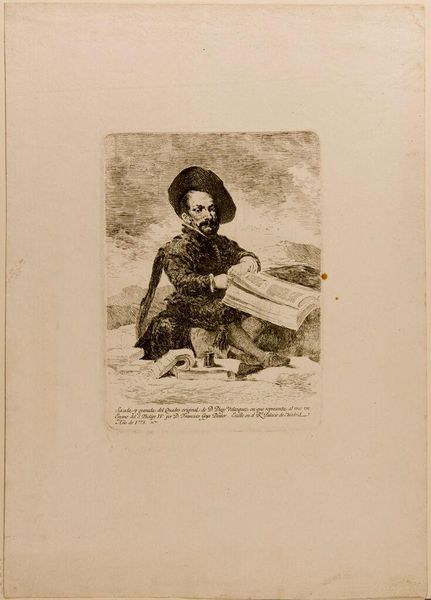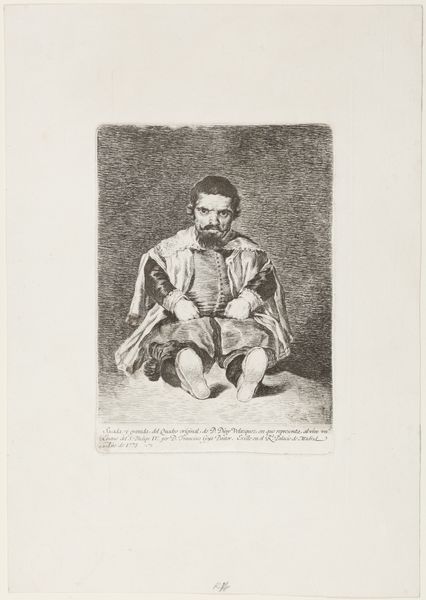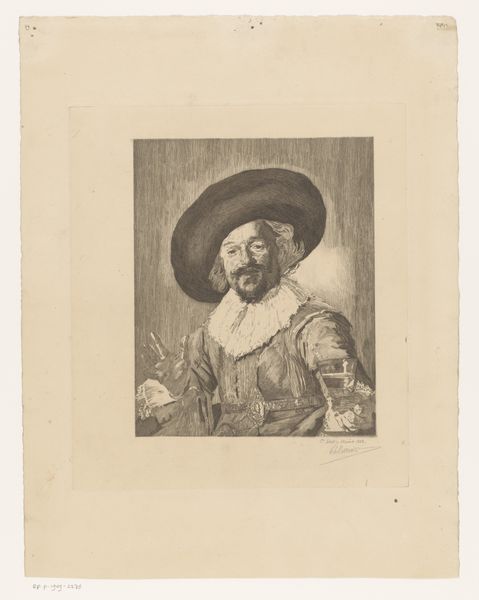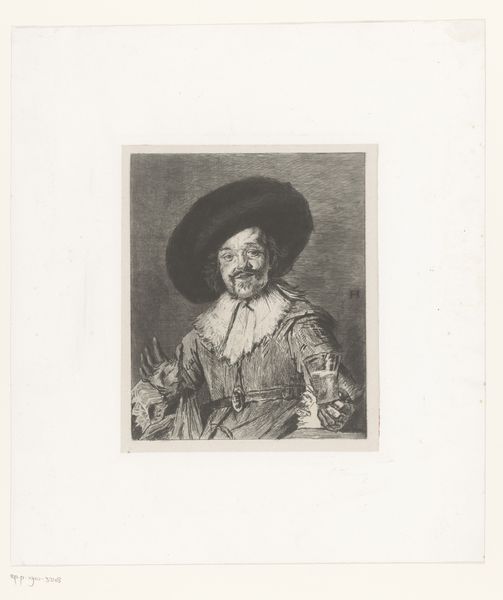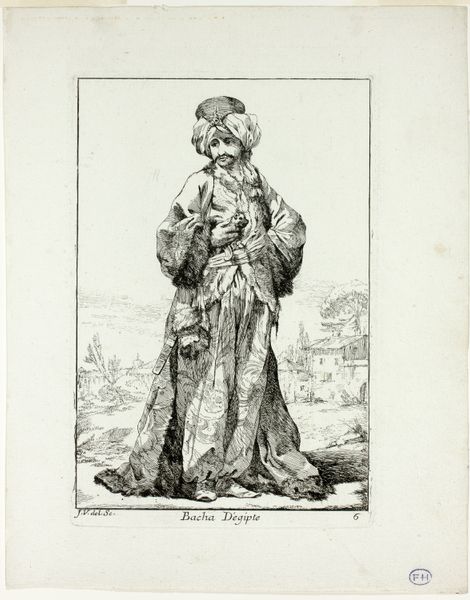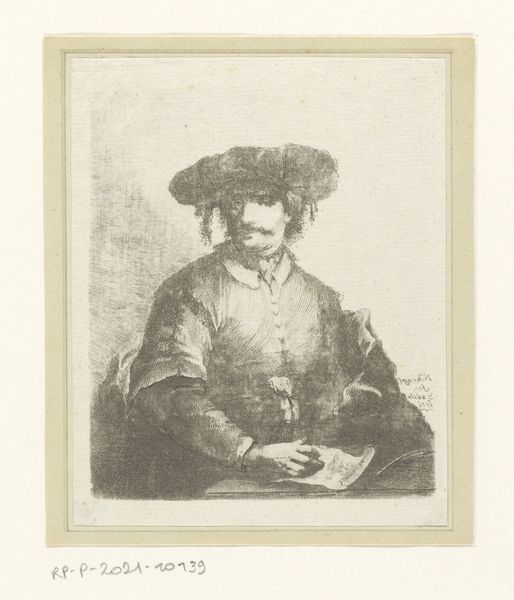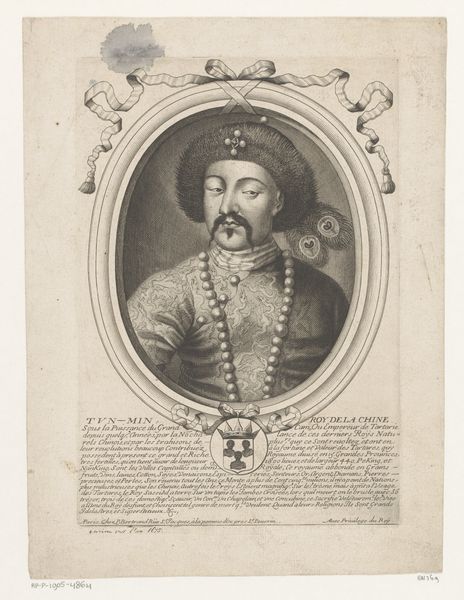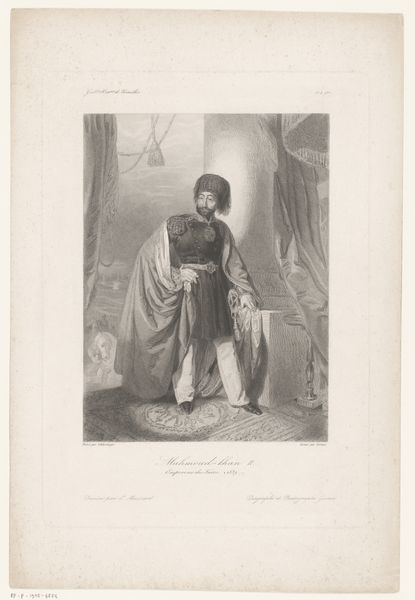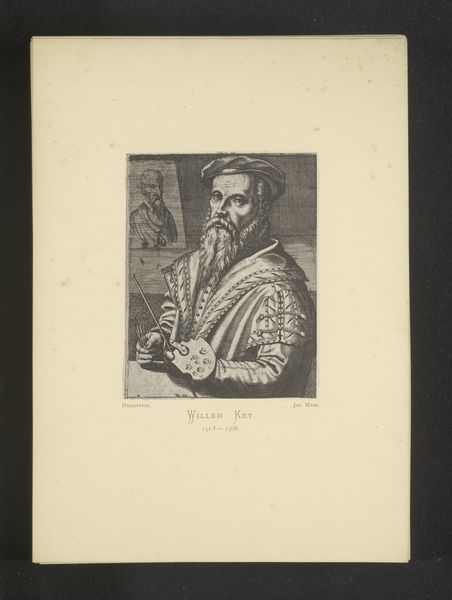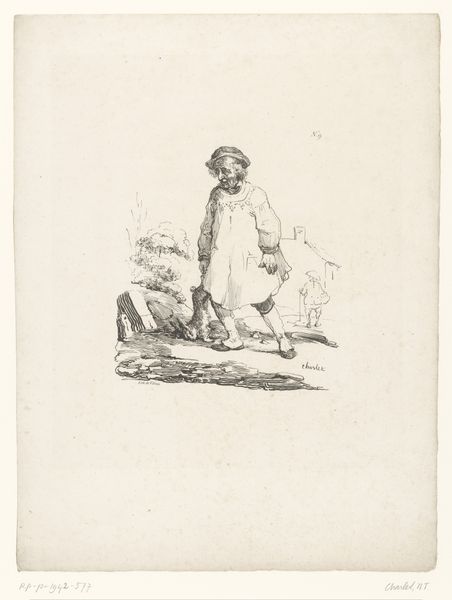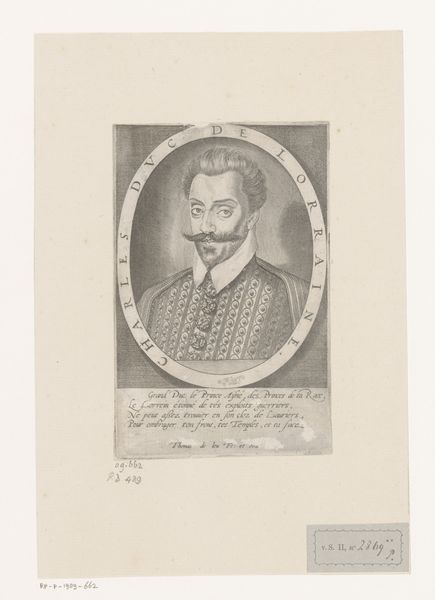
Dimensions: 197 × 155 mm (image); 215 × 155 mm (plate); 420 × 305 mm (sheet)
Copyright: Public Domain
Editor: We're looking at "A Dwarf" by Francisco de Goya, created in 1778. It’s an etching printed on paper and currently residing at The Art Institute of Chicago. It’s a somewhat melancholic portrait, isn't it? How do you interpret this work, focusing on its artistic merits? Curator: Let's examine the linear structure of the etching. Goya masterfully uses hatching and cross-hatching to model the figure, achieving a remarkable tonal range within the monochromatic palette. Observe the contrasting textures; the rough, almost chaotic rendering of the landscape against the more refined detail of the dwarf's costume. Do you notice how the composition leads the eye? Editor: I see what you mean. The subject is central but his gaze almost deflects to the side, and my eyes wander with his. What are your thoughts on the positioning of elements and Goya's use of light? Curator: Indeed. The diagonal placement of the book, the subject's legs, and his hat directs the viewer's gaze. Goya's manipulation of light is superb. He casts shadows strategically to define the planes of the face, giving it depth and personality. Also, there are interesting relationships formed from shape repetitions. Note the curve of the hat's brim, mirrored by the shape of the open book, unifying the image and giving it balance, though the pose is asymmetrical. It generates visual rhythm within a static composition. What do you observe regarding negative space? Editor: Well, the emptiness surrounding the figure creates a kind of isolation. The subject doesn’t quite engage with the scene around them. This seems more to be about internal contemplation rather than existing within a busy scene. Curator: Precisely. The artist used emptiness deliberately to enhance the figure's presence, compelling viewers to consider their own perspectives on marginality and representation. A technical accomplishment for its time. Editor: I never noticed the hat's brim shape, but it definitely impacts the reading of this work as a considered arrangement and now has become an obvious contribution! Curator: Such considerations allow for richer interpretations through visual literacy, something the artist knew all too well.
Comments
No comments
Be the first to comment and join the conversation on the ultimate creative platform.
